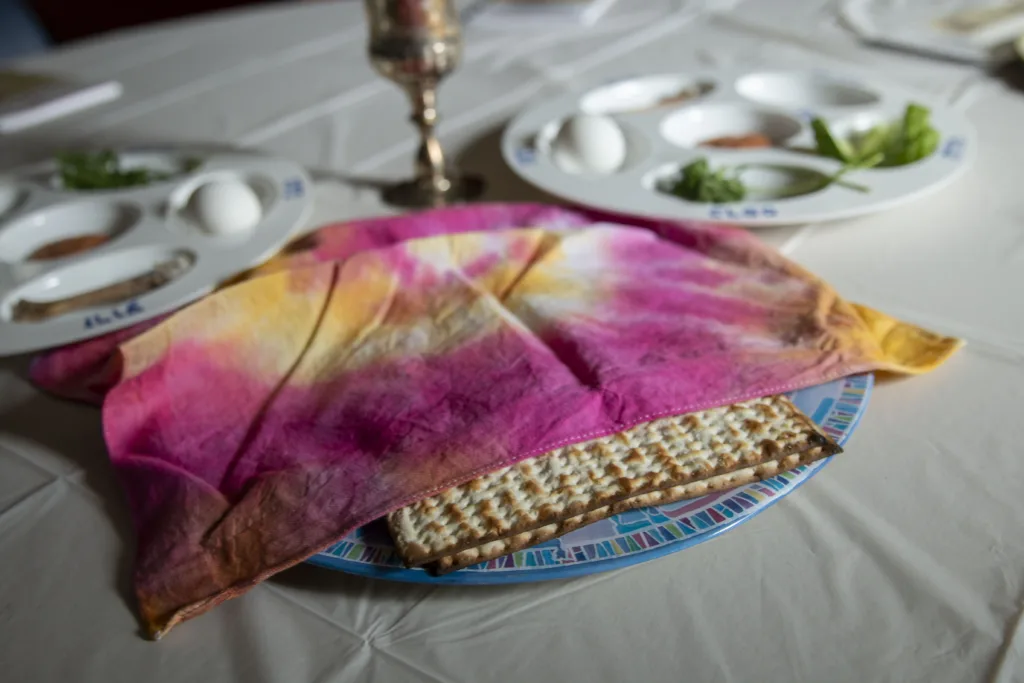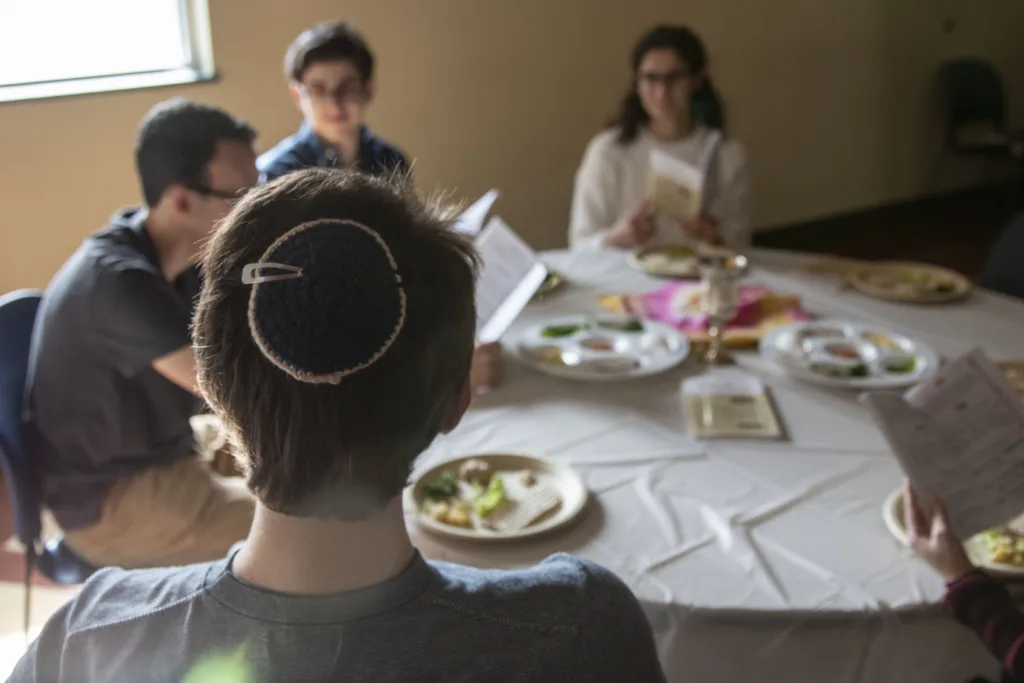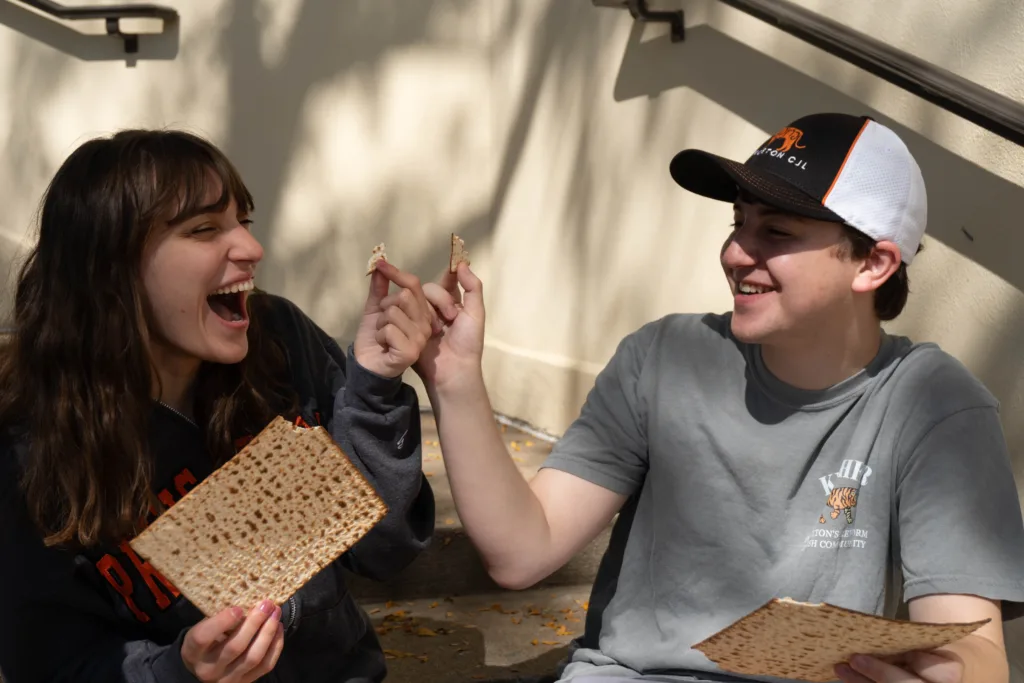WTSeder?! Everything You Ever Wanted to Know About Passover: Part Two

As Jewish people around the world observe Passover this month, we’re diving into the origins of the holiday. In the first part of this series, we learned about how to host a Seder – now we’re exploring where Passover comes from, and who decided it was a thing?
The way we observe Passover today has changed and evolved significantly since Biblical times when the holy day was first mentioned. Check out this timeline to learn more!

Sometime between 1300-1200 BCE: On the first full moon of the first month of spring (the 15th of the Hebrew month of Nisan), Jews from all over gathered at the Great Temple in Jerusalem where they made animal sacrifices, and noshed on lamb and unleavened bread (matzo) for one week. This pilgrimage ritual was rooted in ancient Israelite agrarian springtime rituals involving moving flocks of lambs to greener pastures, and praying for the return of post-winter harvest bounties. The biblical story of the Israelites’ Exodus from Egypt resonated strongly with Jewish people of this time, especially after the Babylonians invaded Jerusalem and destroyed the Great Temple. As a story about overcoming oppression and liberation, this hopeful message hit home for the Jewish people who suddenly lost their spiritual home. As a result, the Exodus story became intrinsically associated with existing springtime rituals of sacrificing lambs and eating unleavened bread.
700-586 BCE: The Jews returned to Jerusalem and rededicated the Great Temple. There, they reestablished Passover as newly liberated people. The priests of this time made some changes to the Passover ritual too. Each head of the household was charged with making the Pesach lamb offering at home. In addition to the feast, they added songs of praise and joy, and paired wine with the celebration. Permission was granted to observe Passover anywhere in Jerusalem, not just in the Temple.
516 BCE: The Jews were once again exiled from Jerusalem and the Second Temple was destroyed under an oppressive rule. Passover, as it had been celebrated, was never observed the same way again. In response to the destruction, a group of innovative rabbis created a new approach to Judaism that didn’t center around the Great Temple. Many of their adaptations radically changed Judaism, and became the foundation for the way it is still observed today. The rabbis discussed how to observe Passover, in what order, and found creative ways of translating all the springtime rituals that used to occur in the Great Temple into people’s homes. This meant officially banning animal sacrifices, making Passover a home-based ritual, and positioning regular Jews (not rabbis or priests) as the leaders of the Seder.
70 CE: Isaac’s descendants (by then known as the Children of Israel) were enslaved in Egypt. God instructed Moses and Aaron to repeatedly ask Pharaoh to release the people of Israel; each time Pharaoh refused, another plague was brought upon the Egyptians. Finally, as God was about to bring the final plague — the death of the firstborn son — He instructed Moses to tell the people of Israel to prepare by slaughter a sheep and smear the blood on their doorposts, a sign to G‑d that this was an Israelite home, to be passed over. This is what gave the Passover sacrifice (and holiday) its name. In the original Hebrew, the word is Pesach (first mentioned in Exodus 11). God instructed to Moses that, “This day shall be to you one of remembrance: you shall celebrate it as a festival to יהוה throughout the ages; you shall celebrate it as an institution for all time” (Exodus 14).
Passover today: Today, Passover is statistically the most widely-observed Jewish holiday in the world. The Seder meal that typically takes place in the home has not changed much over the last dozen centuries! However, many people have been inspired to create updated versions of the traditional haggadah in accordance with personal values associated with Passover themes of justice, liberation, freedom, and redemption.
Like always, Passover is an opportunity for families and friends to join together to celebrate and acknowledge the liberation and freedom of the Jewish people. Some members of the Jewish community (usually Reform and Reconstructionist Jews, and Jews in Israel) celebrate the holiday for seven days, and others (usually Conservative and Orthodox Jews) for eight days.

Today, many people ritually deep clean their homes, cars, and offices in preparation for Passover. Some view Passover as an invitation to do “spiritual spring cleaning” designed to help us release what hasn’t served us over the last year, and to make room for new blessings.
As with every year, Passover includes two powerful rituals of grief: dipping a leafy green into salt water and removing ten drops of wine from our cups. With salt water, we stop to imagine the tears of our enslaved ancestors. With red drops of wine, we stop to have empathy for the sufferings of our enemies. This Passover, we gather in the wake of the October 7 attacks, remembering the victims and more than 130 hostages still being held in captivity in Gaza. We gather even as Gazan civilians mourn their dead and fear daily for their safety. May we be granted the opportunity to hold the teachings of Passover and the dissonances of the present moment in ways that help us become people of greater heart and hope, seeking liberation and safety for all.